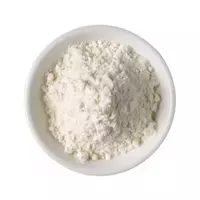Coconut flour

Holidays in southern exotic countries are certainly associated with the sun, the sea, the beach, fruits and, of course, coconut palms. It's hard to imagine the tropics without this tree. Interestingly, the coconut palm received its famous name from the light hand of Portuguese sailors, who were the first to explore the countries of Southeast Asia.
Translated from Portuguese, the word "coco" means monkey. Apparently, the Portuguese drew a parallel between monkeys, which can often be seen on coconut palms in Asia and coconut fruits. Botanists believe the coconut palm's birthplace is Malaysia. Palm trees are now native to India, Sri Lanka, the Philippines, Thailand and of course their historic homeland of Malaysia.
Coconut is a round-shaped fruit that is covered with a strong outer shell called an exocarp. The characteristic fibers that penetrate the coconut shell are called coir. The white flesh of coconut, which is eaten as copra.
Coconut is filled with liquid, which is popularly nicknamed coconut milk. In fact, this is coconut water, which is enriched with various vitamins and healthy substances. Since all components of coconut have various beneficial properties and qualities, people have learned to make various products from nuts.
Coconut is recycled completely. Coconut shells are used in agriculture as fertilizer. Or in medicine - activated carbon from coconut. Coconut fibers are used in industry. And coconut pulp and coconut milk have long been used in cooking.
Coconut flour and coconut oil, coconut chips, all these products have long entered the world culinary traditions. Today we will talk about coconut flour, which is made from coconut pulp. Ripe coconuts collect and separate the flesh from the skarlup.
Then the coconut pulp undergoes degreasing processes, in which medicinal coconut oil is obtained. After degreasing, the coconut pulp is ground into flour. Coconut flour has a similar appearance to wheat, but the useful substances that are part of coconut flour do not compare with wheat.
The main benefit of coconut flour in its composition. When processing coconuts, all useful substances and properties go into flour. Therefore, coconut flour is incredibly useful for the human body. Dishes made with coconut flour can quickly improve digestion and normalize the metabolic processes of your body.
The benefits of coconut flour extend to the liver and to the gallbladder. The antiseptic properties of coconut flour are also known. The composition of coconut flour includes dietary fiber, which is 4 times higher than its content in coconut than in soybeans. Coconut flour is considered a hypoallergenic product and is suitable for a healthy dietary diet.
coconut flour 440 kCal
Energy value of coconut flour (Ratio of proteins, fats, carbohydrates - ju):
Proteins: 20 g (~ 80 kCal)
Fats: 14g (~ 126 kCal)
Carbohydrates: 60g (~ 240 kCal)
Energy ratio (b | y): 18% | 29% | 55%
 Español
Español Français
Français Português
Português Русский
Русский 简体中文
简体中文 繁體中文
繁體中文 日本語
日本語 한국어
한국어 العربية
العربية Türkçe
Türkçe Қазақ
Қазақ Deutsch
Deutsch Italiano
Italiano Українська
Українська
